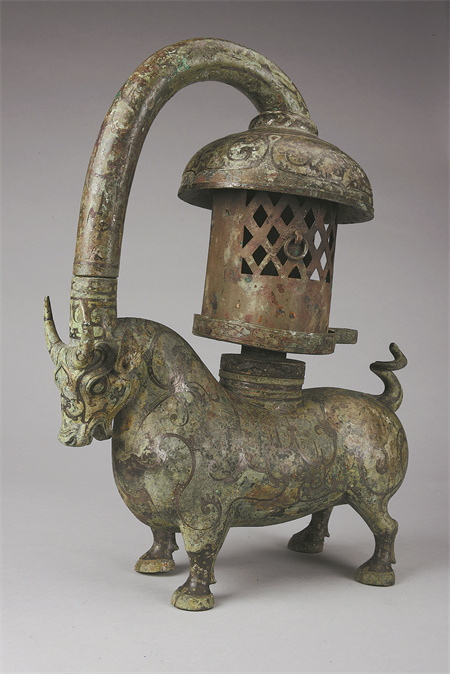

Outside influences
Apart from tradition, the several waves of immigration that had rushed over the land of Jiangnan over the course of history also contributed to the phenomenon, according to Von Spee. "Increased population density intensified competition, and competition breeds excellence," she says.
In the case of Jiangnan, that excellence has often taken the form of exquisiteness, achieved at the cost of time-consuming labor. To prove it, Von Spee includes in the exhibition a bamboo vest made up of an estimated 3,490 fine bamboo tubes, each measuring about 5 millimeters long.
"These were typically worn by officials, who were men, as undershirts to prevent the soiling of their court robes in the sweltering Jiangnan weather," says the curator. "Strung together by cotton threads, the tubes are hollow inside. Yet I cannot imagine a bamboo of that thinness having already developed a wooden texture."
"Therefore, there's only one possibility: Whoever responsible for making of this vest, sometime around the 17th century, must have hollowed out bamboo wood to create these tiny tubes," says Von Spee, noting that her decision to highlight the vest, which entered the museum's collection back in 1918, was also driven by the significance of bamboo to the literati culture of Jiangnan.
The plant, "growing so abundantly in the lower Yangtze Delta" to use her words, had long been admired for its sturdy flexibility, which made it a symbol of resilience in times of adversity.
At the exhibition, the image of the plant appears on a 12th-century gilded silver tea service set, together with those of birds, butterflies and blossoms — all favorite subjects of Jiangnan artists. According to historical documents, tea shops in Hangzhou, the Southern Song capital between 1127 and 1279, would sell ice-cold plum-blossom drinks in silver vessels during the summer.